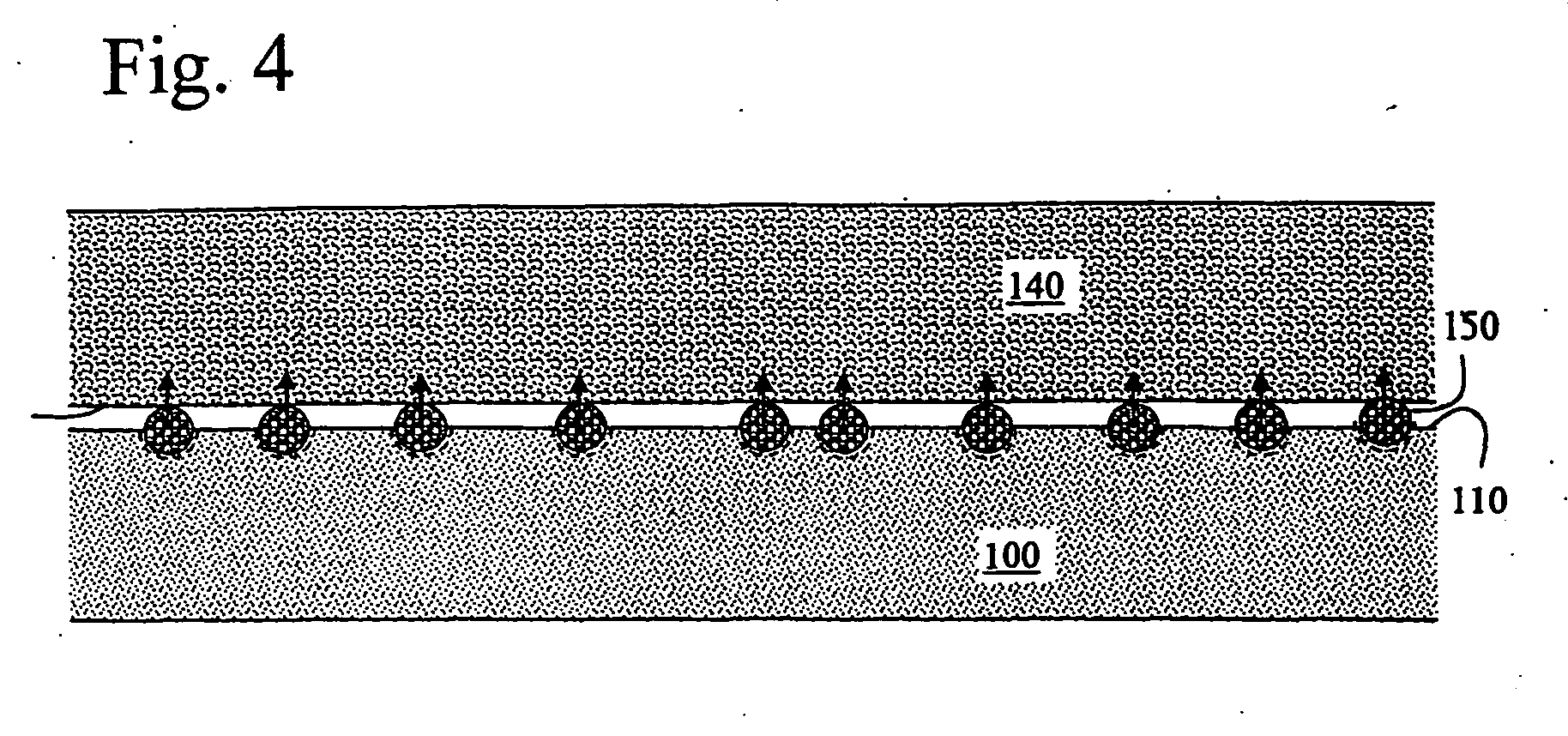Surface modification of triblock copolymer elastomers
a technology of copolymer and surface modification, applied in the field of thermoplastic elastomers, can solve the problems of patient discomfort, prior methods and products that do not have certain surface characteristics of elastomers, and products made from gelatinous compositions tend to rupture and crumble, so as to prevent ischemia, minimize frictional and shear forces on the skin, and virtually eliminate tissue necrosis
- Summary
- Abstract
- Description
- Claims
- Application Information
AI Technical Summary
Benefits of technology
Problems solved by technology
Method used
Image
Examples
Embodiment Construction
[0041] Referring to FIG. 1, thermoplastic elastomers having improved surface characteristics may comprise a mixture 50 of one or more polymers, preferably triblock copolymers 40, a plasticizing agent or oil 30, and one or more additives 20. Suitable elastomeric materials include, for example, styrenic triblock copolymers, such as a hydrogenated poly(styrene-b-isoprene), a hydrogenated poly(styrene-b-isoprene-b-styrene), a hydrogenated poly(styrene-b-butadiene-b-styrene), a hydrogenated poly(styrene-b-isoprene / butadiene-b-styrene), or combinations thereof. In certain embodiments, elastomeric articles of the present invention comprise any of polystyrene-b-poly(ethylene / propylene) (SEP), polystyrene-b-poly(ethylene / propylene)-b-polystyrene (SEPS), polystyrene-b-poly(ethylene / butylene)-b-polystyrene (SEBS), or polystyrene-b-poly(ethylene-ethylene / propylene)-b-polystyrene (SEEPS), or any combination thereof.
[0042] Suitable oils 30 include pasticizing oils such as paraffinic oils, naphte...
PUM
| Property | Measurement | Unit |
|---|---|---|
| Temperature | aaaaa | aaaaa |
| Fraction | aaaaa | aaaaa |
| Radius | aaaaa | aaaaa |
Abstract
Description
Claims
Application Information
 Login to View More
Login to View More - R&D
- Intellectual Property
- Life Sciences
- Materials
- Tech Scout
- Unparalleled Data Quality
- Higher Quality Content
- 60% Fewer Hallucinations
Browse by: Latest US Patents, China's latest patents, Technical Efficacy Thesaurus, Application Domain, Technology Topic, Popular Technical Reports.
© 2025 PatSnap. All rights reserved.Legal|Privacy policy|Modern Slavery Act Transparency Statement|Sitemap|About US| Contact US: help@patsnap.com



